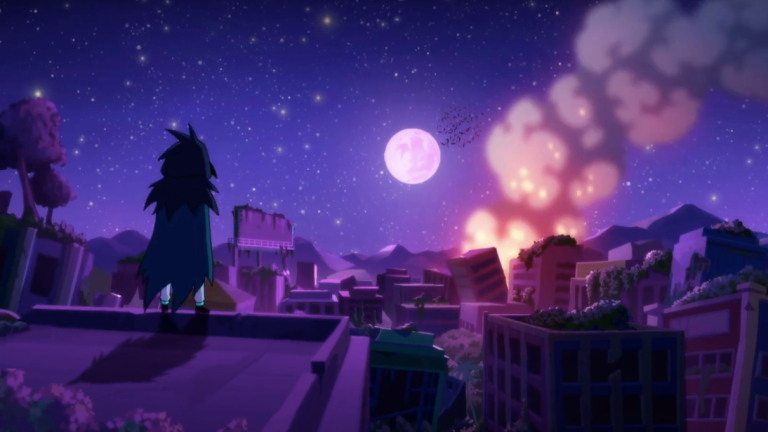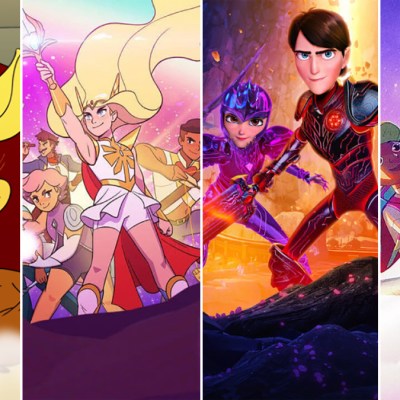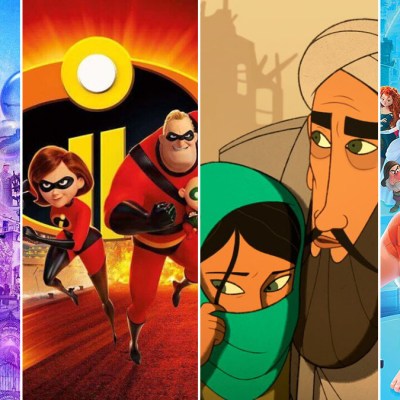Kipo and the Age of Wonderbeasts Season 2 Review (Spoiler-Free)
Kipo and the Wonderbeasts remains supremely confident family entertainment in its second season.

This Kipo and the Age of the Wonderbeasts season 2 review contains no spoilers.
When it comes to dealing with a post-apocalypse, the best stories are the ones that deal heavily in hope: hope for a better future, hope for happiness, and—occasionally—sheer moments of joy found amid the mess. One of the things I loved about Kipo and the Age of Wonderbeasts season 1 is that it so perfectly balances the idea of things being an absolute chaotic mess and acknowledging that inside that chaos lies a path toward a brighter, more beautiful future. The second season doubles down on that message, and Kipo continues to be the focal point around which the possibilities of that new future form.
The conceit of Kipo is that 200 years earlier (heavily indicated to be the year 2020), an apocalyptic event sent humans scurrying to cities underground, called Burrows, while the animals on the surface mutated into humanoid, intelligent species now called Mutes. When disaster strikes her Burrow, 12-year-old Kipo is thrust onto the surface, and only survives the first season with the help of Wolf, a suspicious survivor human girl raised and betrayed by a family of Mute wolves; Benson and Dave, a human/Mute duo who have used cleverness rather than ferocity to survive on the surface; and Mandu, a blue four-eyed Mute pig who doesn’t speak, but has plenty of intelligence. Together, the five found the back-up Burrow where Kipo’s father was waiting for her, but not before the villain Scarlemagne, a Mute mandrill, captures Kipo’s father and the rest of her people to build an army.
Throughout the first season, Kipo uses a Friendship-Is-Magic-like philosophy to win allies everywhere she goes. When Wolf warns her that she needs to be more self-serving to survive, Kipo routinely steps forward to do the right thing and help someone else, even when it means risking her own life. The faith she gives to others, and the model she sets, are almost always rewarded; her ability to think outside the box and find commonalities across tremendous hurdles make her reminiscent of another preteen animated hero—Aang from Avatar: The Last Airbender.
It was revealed in season one that Kipo is part-Mute, though she doesn’t know why or how, and the exploration of that history becomes the core of season two. That Kipo’s father somehow knows the tyrant Scarlemagne also becomes a major part of the story; learning about her parents’ past helps Kipo envision a new future. It also reveals that she has even more dangerous foes, and that they’re unlikely to be won over by Kipo’s faith and hope for a better world.
As Kipo tries to figure out how to control and grow her new powers, she also has to figure out how to keep a tight hold on her humanity. While some of the key factors in that journey will be obvious to adult viewers early on, the structure of the season is surprising, and the way that Kipo reaches those predicted moments make them feel like a payoff, rather than expected. The show’s ability to change the direction of viewer expectations is one of its greatest strengths.
It’s also performed by an incredible cast of voice actors, led by Karen Fukuhara (Glimmer on She-Ra and the Princesses of Power) as Kipo. Sydney Mikayla (School of Rock) plays a fantastically gruff—but increasingly soft-hearted—Wolf; Coy Stewart (The Blacklist) captures the joy and loyalty of Benson and is paired perfectly with Deon Cole (Black-Ish) as Dave, whose constant metamorphoses have him playing the same character in several different ages and forms. And Sterling K. Brown (This Is Us) as Kipo’s father Lio Oak manages to draw on a huge emotional range, while still providing pitch perfect Dad-voice as needed. The relationships between the first season cast grow beautifully, and viewers also get treated to a budding (same-sex) romance between Benson and one of Kipo’s Burrow-friends, Troy. The interactions there are awkward and sweet in all the right ways, and should please viewers who enjoy romance alongside their saving-the-world action.
Family cartoons that have all the appeal needed to entertain a range from five years old through parents can be hard to come by. Kipo and the Age of Wonderbeasts hit that sweet-spot in season one, and it’s continued to raise my expectations as we completed season two. The conclusion ends with a promise that there will be further stories—and greater hurdles to overcome, and I can guarantee that my whole family will be there to see how Kipo and her friends change their world.
Kipo and the Wonderbeasts season 2 premieres June 12 on Netflix.


